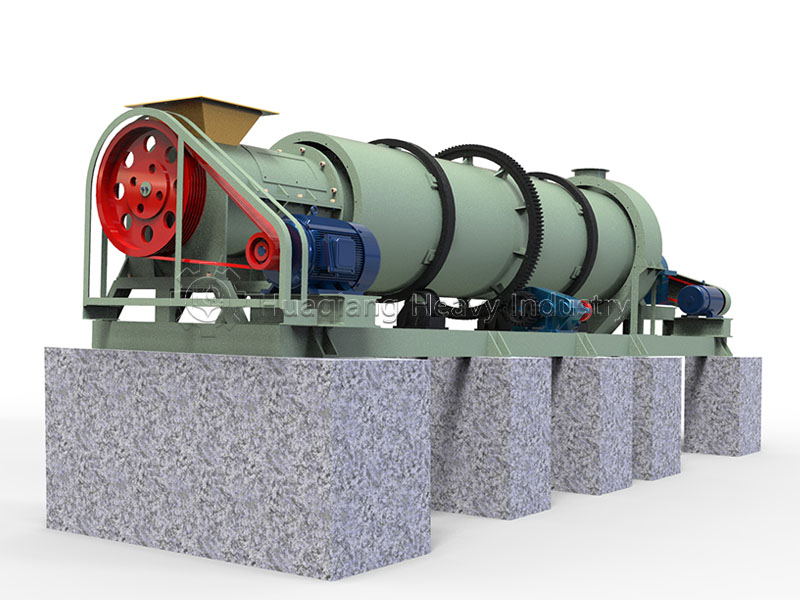While the new type two in one organic fertilizer granulator simplifies the organic fertilizer production process with its integrated design, it has more specific requirements regarding the adaptability of the processed materials.
Precise control of material particle size is crucial. Raw materials entering the new type two in one organic fertilizer granulator must undergo crushing and screening to ensure uniform particle size controlled within the 1-3 mm range. Large impurities or incompletely crushed lumps in the material will not only clog the equipment’s feed channel and die holes but may also accelerate the wear of internal components, affecting granulation continuity. Excessively fine powdery materials are prone to generating dust and will result in insufficient granule strength after molding.
Material moisture control is critical. The suitable material moisture content is 20%-30%, which needs to be fine-tuned based on the raw material composition. Excessive moisture content causes the material to easily clump together inside the machine, leading to a decrease in granulation rate and potentially causing die blockage. Insufficient moisture content results in a lack of viscosity, making it difficult to form through extrusion or granulation processes, and even if formed, it is prone to breakage.
The material composition ratio must be scientific. The carbon-to-nitrogen ratio of the raw materials should be maintained at 25-30:1. Avoid imbalances in the proportion of single high-nitrogen raw materials (such as poultry and livestock manure) or high-carbon raw materials (such as straw), otherwise the stability of the fertilizer effect after pelleting will be affected. At the same time, the proportion of fiber components in the material should not be too high. Excessive fiber can easily entangle equipment parts, requiring pretreatment to decompose some coarse fibers. If the raw material lacks viscosity, a suitable amount of natural binder can be added to improve the pelleting effect.
Furthermore, the material must be fully decomposed. Undecomposed raw materials may undergo secondary fermentation after granulation in the new type two in one organic fertilizer granulator, causing the pellets to expand and break, and potentially leading to seedling burn during fertilization.



